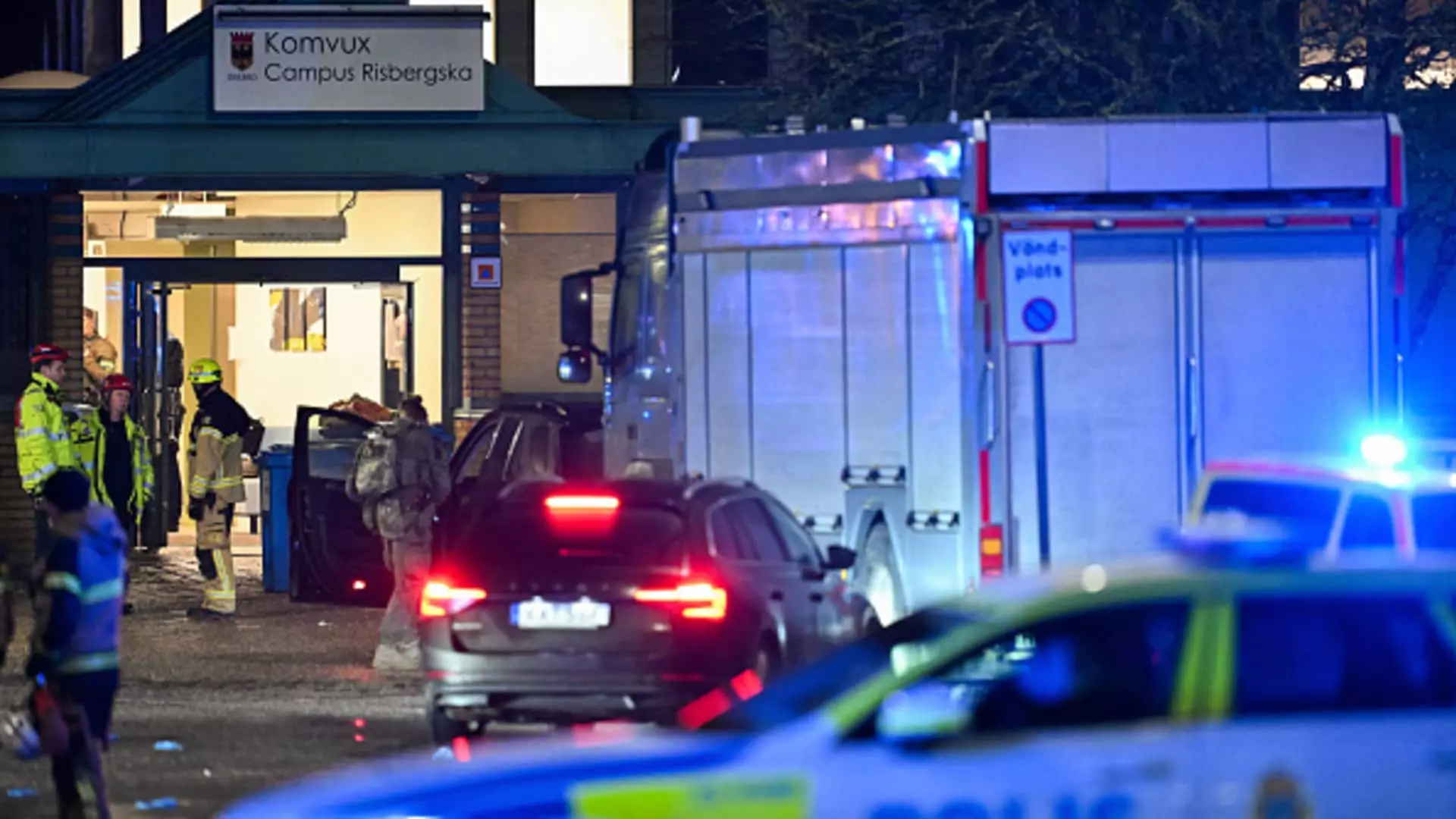On a dreary Tuesday in Sweden, tragedy struck the community of Örebro, where the unthinkable occurred at an adult education center, claiming the lives of approximately ten individuals. This harrowing event has been identified as the deadliest shooting in Swedish history, plunging the nation into a depth of grief and shock. The local police reported that the suspected gunman is believed to be dead, complicating efforts to understand the full scale of this disturbing incident. As the details began to unfold, questions about the gunman’s motives and identity loomed large, leaving a sense of uncertainty that amplified the national despair.
Local authorities, led by Police Chief Roberto Eid Forest, conducted urgent investigations amid the chaos. They set up a crime scene encompassing the classroom and surrounding areas, acknowledging that further detailed searches were necessary. Forest noted that the investigation would involve multiple steps, including gathering witness statements and profiling the shooter, who did not have a prior record with law enforcement. This tragic incident has prompted an extensive investigation into not just murder, but also arson and aggravated weapons offenses, signaling the complexity and severity of this case.
A Reflection on the Victims
The Risbergska school, where the shooting took place, primarily assists adults who have faced barriers to completing their education. Many of these individuals are immigrants, striving for better opportunities in Sweden’s labor market by acquiring necessary skills, including proficiency in the Swedish language. This tragic event highlights the challenges such vulnerable populations face, particularly in an environment aimed at promoting inclusivity and opportunity. The overwhelming loss of life adds to the relentless narrative of violence that has begun to tarnish Sweden’s reputation as a peaceful nation.
Political Reactions and National Mourning
Swedish Prime Minister Ulf Kristersson expressed his deep sorrow in a statement, characterizing this day as one of profound pain for the entire country. His acknowledgment of the incident as the worst mass shooting in Swedish history struck a chord, resonating with a populace grappling with its newfound vulnerability. Even King Carl XVI Gustaf expressed his condolences, reflecting a collective sorrow that transcended governmental boundaries. Such reactions from leading figures speak volumes about the incident’s gravity and its impact on national psyche, fostering an environment of shared grief and shock.
A Historical Context of Violence
Sweden, despite its reputation for low crime rates, has experienced an unsettling increase in gun-related violence in recent years, largely attributed to gang activities. While this incident marks a tragic outlier in a series of violent acts that have linked organized crime to everyday life, it underscores an urgent need for conversation about gun control and public safety. The correlation between high rates of gun ownership for hunting purposes and the rise in illegal firearms highlights a broader societal issue that must be addressed. Historically, the nation has seen fatal attacks in educational settings, but instances of this magnitude have been exceptionally rare, leading many to question how a culture once celebrated for its tranquility has faced such a seismic shift.
A Call to Action
As Sweden processes this unfortunate episode, there arises an undeniable call to action. The discussions surrounding effective policy implementations for gun control, mental health resources, and comprehensive safety training in public spaces must become paramount. The community must not only grieve but also mobilize towards solutions that can prevent such tragedies from occurring in the future.
Furthermore, there is a critical need for mental health support for survivors, witnesses, and families affected by this incident. The emotional and psychological scars left by the violence extend beyond the immediate loss of life, reverberating throughout the local community and the nation as a whole.
In the face of such adversity, Sweden finds itself at a crossroads, reflecting on its national identity and commitment to safety. As citizens mourn their lost community members and grapple with the unsettling reality of their own vulnerability, the time has come for collective action and healing. The narrative of one tragic day must not define a country, but rather serve as a catalyst for dialogue, reform, and community resilience in the pursuit of peace and safety for all.



Leave a Reply